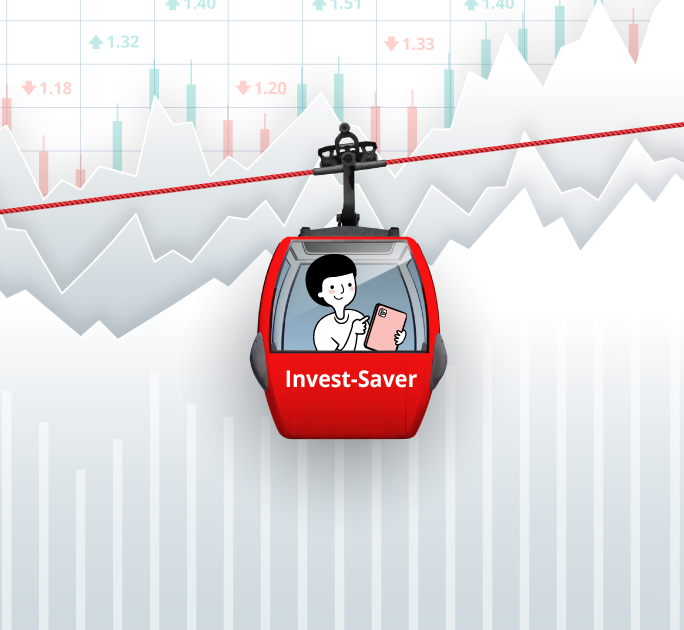![]()
If you’ve only got a minute:
- Dollar-cost averaging (DCA) is a strategy involving investing fixed amounts at regular intervals into the same investment over a period, regardless of the market conditions.
- Taking this approach to investing can help to take the emotions and guesswork out of the equation and it also provides an affordable and reliable way to grow your wealth over time.
- As there are pros and cons to different investment strategies, you can consider employing a hybrid approach with a regular savings plan as a base.
![]()
“Should I do lump-sum investing or should I dollar-cost average (DCA) instead?”
This is one of the most common dilemmas that investors – both novice and seasoned – face. Oftentimes, investors are divided between these 2 camps and it’s easy to understand why.
Much like in life, when it comes to investing and constructing an investment portfolio, there is no one-size-fits-all or sure-win situation. How much and how we choose to invest our hard-earned savings is dependent on several factors. They include our financial circumstances, needs, objectives, investment experience, risk tolerance, time horizon as well as availability to monitor the market.
Once you’ve considered these factors, the next step is to figure out your preferred style of investing. The 2 main ways to invest are by making lump-sum contributions and DCA.
Lump-sum vs DCA
By undertaking lump-sum investment, you are putting a larger sum of money in an investment product in one go as opposed to breaking it up into several smaller tranches over time. To achieve success in this approach, you may be required to “time the market” which means buying into the market at a low and selling at a high, to maximise your returns.
However, this is a lot harder than it sounds as it is notoriously difficult to predict when stocks and markets have hit bottoms or highs. Instead, investors are better off understanding whether markets are in trading in ranges that are above or below their historical valuations.
Meanwhile, DCA involves allotting smaller amounts of money into the same investment but at regular intervals. By doing so, you are buying at multiple price points which will eventually “average out” the investing cost over the longer term.
DCA can also be done automatically through a regular savings plan (RSP) which will help you invest fixed amounts monthly into the same investment, regardless of existing market conditions. This means you automatically buy more units when prices are low and fewer units when prices are high.
While there are pros and cons to each of these methods, for the first-time investors, DCA is generally regarded as a more accessible way for you to get started with. So, so let’s have a look at what DCA can bring to the table for you, as well as some common misconceptions.

DCA can be a tool for cultivating a healthy investing habit
Many of us know the importance of investing but often hold back at the thought of having to part with a sizeable amount of our savings at once, and the uncertainty of when to enter the market.
Setting up an automated DCA is a good way to overcome this inertia, allowing for disciplined savings and investments each month while averaging out potential market volatility.
For example, DBS Invest-Saver is a RSP which allows you to start investing with as little as S$100/month, making for a reliable and affordable way to grow your wealth over time.
Moreover, even if you’re just starting out with S$100/month, as you get more used to setting aside your hard-earned savings for investing, the more confident you’ll get in budgeting well and cultivating a habit of investing.
DCA can help take the emotions out of investing
Many retail investors believe they have a sound rationale to their investment decisions, but studies on behavioural finance tend to tell a different story.
For most of us, our investment decisions are influenced by several sources including but not limited to past experiences, information overload, loss aversion, greed, or fear of missing out.
Having a disciplined investment strategy such as a DCA helps to reduce the potential of making emotional investment decisions.

DCA takes the guesswork out of timing the market
As we have shared earlier, “timing the market” involves investing when the market is at a low and exiting when they are at a high. Behavioural studies have shown that there is a strong instinct to follow the crowd, often leading to investors buying at the peak and selling at the bottom, among other common investor biases. Adding on the unpredictability of market fluctuations, timing the market is a near impossible feat.
Instead, you can avoid the stress of timing the market by having “time in the market” by employing a DCA strategy. By investing regularly in fixed amounts into the same investment, you will reduce the risks of extreme outcomes (whether positive or negative) and help you to stick to your investment plan.
DCA can incur the same costs as lump-sum investing
More often than not, fees are usually involved when it comes to investing, whether it’s a platform or brokerage fee, or commissions for fund managers. A high fee is disadvantageous as it eats into your returns. For example, if your costs are 5% of the amount invested and your returns reap a 6% increase, that’s just a 1% gain for your investment.
One common misconception is that DCA involves higher fees as investments are made regularly as opposed to a one-off investment.
The above would hold true only if each trade, regardless of how much you are investing, incurred a flat fee. For example, if there is a fee of S$10 for every trade placed regardless of the amount invested, then it would be less costly to invest a larger amount. The S$10 fee works out to be a hefty 10% of S$100, but only 1% of S$1000.
However, if the cost is a percentage of the amount invested, then DCA will cost the same as lump-sum investing. For example, with a sales charge of 0.82%, you would pay $0.82 for each $100 you invest. This means that regardless of whether you invest $100 every month for a period of 10 months, or $1,000 at a go, the total sales charge you will end up paying is $8.20.

DCA may have potentially lower returns than lump-sum investing
The potential upside of lump-sum investing is higher than DCA. But the opposite is true as well – the downside could be extreme in a market crash, and you could take heavy losses. There is no guarantee that going big and all-in is better unless you are able to successfully time the market.
In the event of a bull market where share prices are increasing over an extended period, lump-sum investing might provide greater overall returns. However, in a bear market where prices are falling, the DCA strategy, which sees you investing regularly in fixed amounts, will likely lower the average cost of the investment.
You might be asking yourself: “Is there a way to capitalise on the benefits of both investing strategies?”
Well, yes, you can adopt a hybrid approach by using an RSP to build your base slowly and steadily, while adding more funds into the investment in an ad-hoc manner as and when market opportunities arise.
Historically, the stock market has seen more ups than downs even through years of global disasters, economic crises, and wars. These times of market downturns could even present a potential buying opportunity. If you stay invested, there is a good chance that you will see your investments grow.
That said, regardless of which investment strategy you choose, always do your due diligence and research in determining which underlying investment to put your funds into, as well as comparing different fee structures.
If you do find a product with a reasonable fee that suits your financial profile, it might be a good option to start with it.

In summary
Overall, DCA might just be the preferred alternative if any of the following applies to you:
- Are just starting out.
- Looking to build healthy investment habits.
- Do not have the funds to do lump-sum to invest.
- Want to put money to work as it becomes available.
DCA helps to take the guesswork out of timing the market and smoothens potential losses while staying invested during times of market downturns.
Regardless of which method you choose to adopt, it is most important to get started on investing with a long-term mindset so that you can adequately prepare for retirement.






